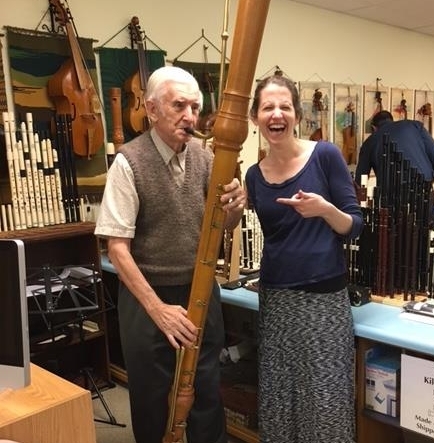The Game-Changer You Already Own
What's the one thing you can bring to a lesson or practice session that is guaranteed to make you a better musician?
It's not magic. It's not even high-tech. It's the score!
One of the first things I teach new students is to always, always cart along the score. Unless you're playing an unaccompanied solo, showing up with only your part is like bringing a serving dish to a potluck but forgetting to fill it with food.
Seriously, folks. The score is essential. The score is your lifeline. You need to sleep with the score under your pillow. You need to carry it next to your heart. No, you don’t necessarily need to play from it (although I like to whenever possible), but you do need to know it backwards and forwards.
But why? What’s so important about that junk for the keyboard or all those other consort parts anyway? Especially if you’re not planning to play the piece with anyone else in the immediate future?
Here's the thing: the score is your boss. You may think your part is your boss, or that you are the boss. No and no. The score is your boss. It shapes, colors, and dictates how you play your part.
Take any single note in your piece. Here are five things the score can tell you about it:
1) Are you the main event? You have four quarter notes. Do you invest them with a soloist’s emotion, or do you play them as a graceful accompaniment? Take a look at the baseline- if it has thematic material or fast moving notes, chances are you’re not the big cheese.
2) Are you a crunch or a release? The more technical terminology for this is dissonance or consonance. Is your note crunchy, or dissonant? If so, you need to play it up and connect it to its release note. If your note is consonant, you most often play it with less propulsion, sometimes taking a comma or breath afterward.
3) Where are you in the chord? If you’re the third, you’ll place the pitch of your note somewhere different than if you’re the fifth, e.g.
4) Which notes will work in your ornament? If there’s an E Major chord underneath your note, you’re not going to be happy leaping to a G natural as you decorate.
5) What’s your tempo? Say you’ve got a half note, but the bass part is all sixteenth notes and the whole movement is marked “adagio.” Those sixteenth notes have to sound adagio, not just your half note- which means you may need to play the movement slower than you think.
This is only the beginning! Bring the score!



















